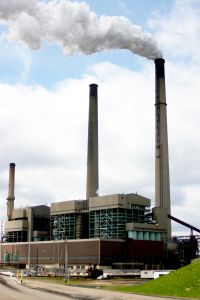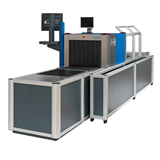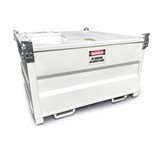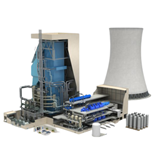From July 1, just under 300 companies, and other entities such as councils with large landfill sites, will face a bill of $23 for every tonne of carbon dioxide they emit.
The emissions will be tracked by the Clean Energy Regulator.
The carbon price will rise by 2.5 per cent a year in real terms until an emissions trading scheme, with a floating price determined by the market, starts from July 1, 2015.
The price won't apply at the petrol bowser, light vehicle business transport and off-road fuel use by the agriculture, forestry and fishing industries.
An effective carbon price will be applied to domestic aviation, domestic shipping, rail transport, and non-transport use of fuels. Users of these fuels can opt-in to the mechanism under the Opt-in Scheme.
Companies liable for the carbon price, under the ETS, will be able to buy permits overseas or domestically to offset their emissions.
For the first three years of the ETS, a price ceiling will be set at $20 above the expected international price and will rise by 5 per cent in real terms each year.
The price floor will be $15, rising by 4 per cent each year in real terms.
The most emissions-intensive industries, which will face stiff competition from countries with no carbon price, will benefit from a $9.2 billion Jobs and Competitiveness Program to ensure industry, local communities and workers have a smooth transition and a strong incentive to reduce their carbon pollution.
To start the move to cleaner energy, an Energy Security Fund will allocate free carbon units and cash payments to strongly affected coal-fired electricity generators, conditional on them publishing Clean Energy Investment Plans, which show how they will reduce their pollution, and by meeting power system reliability standards.
They will also shut down 2000 megawatts of the worst-polluting power generation to make way for lower pollution generation.
A $1.2 billion Clean Technology Program, over and above the Jobs and Competitiveness Program, will help directly improve energy efficiency and reduce carbon pollution in manufacturing industries and support research and development in low pollution technologies.
The $300 million Steel Transformation Plan will support and assist the industry transition to a clean energy future, and recognises the pressures currently facing this industry.
The $1.3 billion Coal Sector Jobs Package will provide transitional assistance to help the coal industry to implement carbon abatement technologies for the mines that produce the most carbon pollution.
The amount of carbon pollution produced by coal mines varies greatly, so the fairest way to deliver assistance is to target assistance at those mines that are most impacted by the introduction of the carbon price.
The government acknowledges there will be flow-on costs to households and has begun to roll out assistance through tax cuts and increased payments.
A number of bodies have been set up.
The Climate Change Authority will advise on pollution caps, track Australia's pollution levels and progress towards meeting targets and undertaking reviews of the carbon pricing mechanism.
The Clean Energy Regulator will administer the carbon pricing mechanism, the existing regulatory functions for the National Greenhouse and Energy Reporting Scheme, the Renewable Energy Target and the Carbon Farming Initiative.
The Productivity Commission will review industry assistance, and carbon pollution reduction activities in other countries.
The Land Sector Carbon and Biodiversity Advisory Board will review and oversee land sector initiatives, providing advice to government and ensuring the effectiveness of assistance.
The Energy Security Council will advise the government on any emerging risks to energy security and may offer loans to coal-fired electricity generators for the refinancing of existing debt.
More than $13 billion will be invested in clean energy projects, including through the Clean Energy Finance Corporation.
In combination with the carbon price and Renewable Energy Target, this investment will drive the biggest expansion in the clean energy sector in Australia's history.
Clean Energy Finance Corporation will invest in the commercialisation and deployment of renewable and clean energy projects.
Australian Renewable Energy Agency will improve the competitiveness of renewable energy and related technologies through supporting renewable energy technology innovation.
Farmers will have opportunities to reduce carbon pollution and increase the amount of carbon stored on the land.



-160x160-state_article-rel-cat.png)

-160x160-state_article-rel-cat.png)


-160x160-state_article-rel-cat.png)

-160x160-state_article-rel-cat.png)













-160x160-state_article-rel-cat.png)


